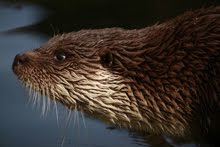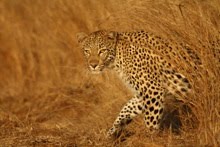Many of my recent posts have been littered with photos taken with the TLS800 telescope photography adapter, and a good number of people have asked for more information about it, so I thought I would post a video I made last year explaining how to setup and use the TLS800 adapter.
Essentially how it works is that the ocular/eyepiece is removed from the telescope and replaced with an optical tube with a bayonet fitting on the one side (to lock in to the spotting scope body), and a thread at the other end to which a T2 adapter is attached(available from any DSLR camera dealer). The T2 then clicks straight in to your DSLRs camera body. This means that the telescope and adapter effectively become an 800mm super-telephoto objective lens for any DSLR camera by using a fitting T2 ring.
 The things that suck about the TLS800:
The things that suck about the TLS800:
Compared to the Canon DO EF 400mm f4 with an EF doubler (i.e. also 800mm) I have also been using recently, the TLS800 only has manual focus (but with doubler I also lost autofocus on the 400mm f4), it has no image stabilizer, and it has a fixed aperture f10. Having said that, I was completely unimpressed by the autofocus functionality of the Canon EF 400mm f4 and ended up using it only in manual focus anyway.
Naturally, having the extra series of wide apertures available to me meant that I could gather more light and still take photos in rather tough conditions. And having the image stabilisation when I was free-hand holding the camera and lens meant that I could take sharp photos at just a little slower shutter speed, and that made a real difference in the late evening light (see the Achensee swan photos here). A caveat about the image stabilisation- this was a nice to have, but is only useful when free-holding the lens (i.e. it should not be used with a tripod as it makes shake worse instead of helping it). This then leaves one manual focussing a great big heavy lens in a rather awkward position. The sheer bulk and weight of the 400mm f4 telephoto lens meant that the longer I had it, the less I would actually take it out with me. And I would certainly never take it birding.
Don't get me wrong, I love this lens. Stapped to a Canon 5D mark II, I had a huge amount of fun with it and got some lovely photos to scatter about my macbook. But my nature photography and birding generally takes me places on foot; and for this, the EF 400mm f4 is rather impractical.
Which brings me back to why I love the TLS800 so much. And I do. And it is not just because I know the guy who designed it ;-)
I like the TLS800 because it really does give me a light and portable alternative to super-telephoto photography, and it fits my style of nature photography/observation. With a full format camera like the Canon 5D mark II (and an ISO of say 1600), I can take flight shots of birds free-hand, and the swans/ducks in the second photo in the Whooper Swans and Bean Geese blog post were photographed when it was really seriously dark. Sunset was already long forgotten.
Some of my favorite photos were taken with the TLS800:
the first leopard in this blog post (taken with a little Canon EOS 1000D)
the flying Goldeneye shots from a few weeks ago
"my" local black kites last year (with a really crummy Canon EOS 350D)
the rock partridge
And the best thing is that if I pack an ocular/eyepiece in my pocket, I can very quickly switch between photography and observation. Which makes me much more likely to drag a camera and scope about wherever I go. I can't wait until the Wallcreepers come back in spring!!!
In the video, I am using a Nikon D3x. A good friend of mine has a boss with too much money with which he has no idea what he should do with it all. Said boss bought a now unused Nikon D3 a year ago and for the last week I have been permitted to borrow and play with it. soooo much fun! I am such a techno geek
Essentially how it works is that the ocular/eyepiece is removed from the telescope and replaced with an optical tube with a bayonet fitting on the one side (to lock in to the spotting scope body), and a thread at the other end to which a T2 adapter is attached(available from any DSLR camera dealer). The T2 then clicks straight in to your DSLRs camera body. This means that the telescope and adapter effectively become an 800mm super-telephoto objective lens for any DSLR camera by using a fitting T2 ring.
 The things that suck about the TLS800:
The things that suck about the TLS800:Compared to the Canon DO EF 400mm f4 with an EF doubler (i.e. also 800mm) I have also been using recently, the TLS800 only has manual focus (but with doubler I also lost autofocus on the 400mm f4), it has no image stabilizer, and it has a fixed aperture f10. Having said that, I was completely unimpressed by the autofocus functionality of the Canon EF 400mm f4 and ended up using it only in manual focus anyway.
Naturally, having the extra series of wide apertures available to me meant that I could gather more light and still take photos in rather tough conditions. And having the image stabilisation when I was free-hand holding the camera and lens meant that I could take sharp photos at just a little slower shutter speed, and that made a real difference in the late evening light (see the Achensee swan photos here). A caveat about the image stabilisation- this was a nice to have, but is only useful when free-holding the lens (i.e. it should not be used with a tripod as it makes shake worse instead of helping it). This then leaves one manual focussing a great big heavy lens in a rather awkward position. The sheer bulk and weight of the 400mm f4 telephoto lens meant that the longer I had it, the less I would actually take it out with me. And I would certainly never take it birding.
Don't get me wrong, I love this lens. Stapped to a Canon 5D mark II, I had a huge amount of fun with it and got some lovely photos to scatter about my macbook. But my nature photography and birding generally takes me places on foot; and for this, the EF 400mm f4 is rather impractical.
Which brings me back to why I love the TLS800 so much. And I do. And it is not just because I know the guy who designed it ;-)
I like the TLS800 because it really does give me a light and portable alternative to super-telephoto photography, and it fits my style of nature photography/observation. With a full format camera like the Canon 5D mark II (and an ISO of say 1600), I can take flight shots of birds free-hand, and the swans/ducks in the second photo in the Whooper Swans and Bean Geese blog post were photographed when it was really seriously dark. Sunset was already long forgotten.
Some of my favorite photos were taken with the TLS800:
the first leopard in this blog post (taken with a little Canon EOS 1000D)
the flying Goldeneye shots from a few weeks ago
"my" local black kites last year (with a really crummy Canon EOS 350D)
the rock partridge
And the best thing is that if I pack an ocular/eyepiece in my pocket, I can very quickly switch between photography and observation. Which makes me much more likely to drag a camera and scope about wherever I go. I can't wait until the Wallcreepers come back in spring!!!










.jpg)








.jpg)



4 comments:
Hi Dale,
It is quite nice to read that as I hesitate a lot to go to digiscoping with this telescope! Think is that here I'm mainly taking photos while walking around and rarely hide, except when I target some specific species. I also did not go for the 400mm lens and choose to take the 300 instead simply because of the weight...
I remember this post you did on the goldeneye and rock partridge... two magnificent post and results of digiscoping!
Hi Chris,
I think that is exactly why so many people choose the 300mm and hesitate to go in to anything bigger (weight, but also price): The 300mm is just such a great and versatile lens for nature photography.
I have recently discovered that my personal pain threshold when it comes to weight extends not much further than the TLS800 with a Canon 5D mark II. I find the weight:quality ratio of this camera exceptional for my photographic needs. The Nikon D3, while being a wonderful camera, is simply turning out to be too heavy for me to want to carry about in most situations. Although, I think its great speed might be a great advantage in sport photography. If the blizzard stops in the next couple of hours, I will be able to take some photos of the Nordic Combination ski jumping this afternoon and see how the D3 performs under dark (and fast) conditions.
Hi Dale,
I noticed you've resized your blog layout and I must say it looks very nice on my 23" LCD.
Anyway, I totally agree with you about the 300mm lens. In my case, I am using the Canon 300mm f/4.
It does the job, but in the rainforest sometimes I wished I was using the f/2.8...sigh*
It's nice to be back here and perhaps you could also resize your pictures & make it bigger. Especially your beautiful wildlife photos...
regards.
Hi Jordan, great to hear from you again!
oooh, a 300mm f2.8 now that would be fun. birding, photography and muscle training all in one go! very cool multitasking!
My wife and I are still debating heading out to Borneo this July/August. If we do, I HAVE TO see a whitebrowed shortwing as it looks just like one of my favorite birds back home, the natal robin/redcapped robin-chat!
happy birding,
Dale
Post a Comment